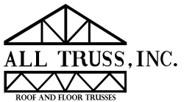 Smart Train is almost here with a launch date slated for the 4th Quarter 2016. This is predicted to provide another housing ramp up in the North Bay!
Smart Train is almost here with a launch date slated for the 4th Quarter 2016. This is predicted to provide another housing ramp up in the North Bay!
With the recent announcement of the fare structure for the SMART train, businesses, schools and government agencies in Marin and Sonoma Counties are gearing up to provide shuttle service to and from the train for their employees, including discounts.
About 30 train trips will be daily, mostly geared toward commuter hours. SMART has been working with other operators, like CityBus in Santa Rosa, Petaluma Transit, Marin Transit, and others to coordinate service.
A special pass purchased through an employer, school, social services agency or other institution will provide rider with a discount. The year-long SMART EcoPass discount will range from 23 percent for less than 50 passes purchased, to 44% for 500-plus passes. There will also be a 50 percent discount for seniors, college students and veterans.
“More than 70 percent of respondents to a recent survey at Santa Rosa Junior College (Santa Rosa and Petaluma campuses only) showed students and employees willing to consider taking the SMART train- So that’s a great start. And we greatly appreciate the proposed discount for students and employees.” said Dr. Frank Chong, president of the college, which has approximately 3,000 employees and 28,000 students. “SRJC is dedicated to sustainability and encouraging greater use of public transportation, as well as bicycles. We’re going to continue working with SMART officials to incentivize greater usage of SMART trains. ”
SMART is working directly with various companies to help coordinate shuttle service for their employees, and the chambers of commerce in Santa Rosa and Novato are working with local employers acting as a bridge between businesses and shuttle services.
Those businesses in Marin include Buck Institute for Research on Aging, BioMarin, Sutter Health, Birkenstock, TravelSmith and Novato Unified School District. In July, the Novato chamber will be coming out with a document listing a menu of options for creating a shuttle service program that outlines tax benefits, provides a list of shuttle companies and cost quotes.
The initial 43-mile train route runs from the transit station in downtown San Rafael to the industrial parks near Charles M. Schulz—Sonoma County Airport.
Article excerpted from the North Bay Business Journal
Authored by Cynthia Sweeny
 In the May revision to the 2016-17 state budget, Gov. Jerry Brown addressed California’s severe housing shortage by suggesting legislation to expedite the permitting process for developers who include affordable homes in their projects. The report also said, however, that requiring developers to set aside 20 percent of housing for low-income households may prevent some developers from taking advantage of the proposed streamlined approval.
In the May revision to the 2016-17 state budget, Gov. Jerry Brown addressed California’s severe housing shortage by suggesting legislation to expedite the permitting process for developers who include affordable homes in their projects. The report also said, however, that requiring developers to set aside 20 percent of housing for low-income households may prevent some developers from taking advantage of the proposed streamlined approval.


 Smart Train is almost here with a launch date slated for the 4th Quarter 2016. This is predicted to provide another housing ramp up in the North Bay!
Smart Train is almost here with a launch date slated for the 4th Quarter 2016. This is predicted to provide another housing ramp up in the North Bay! “Across industries we are seeing an increase in consumer demand toward sustainability practices, and no industry is better poised to meet these demands than hospitality,” said Rick Fedrizzi, CEO and Founding Chair, USGBC. “This growing sector is rapidly adopting green buildings because owners and developers want to enhance their triple bottom line—people, planet and profit. LEED is a transformative tool that positively impacts the quality of our built space by creating a healthier, more sustainable environment that saves money and resources.”
“Across industries we are seeing an increase in consumer demand toward sustainability practices, and no industry is better poised to meet these demands than hospitality,” said Rick Fedrizzi, CEO and Founding Chair, USGBC. “This growing sector is rapidly adopting green buildings because owners and developers want to enhance their triple bottom line—people, planet and profit. LEED is a transformative tool that positively impacts the quality of our built space by creating a healthier, more sustainable environment that saves money and resources.”